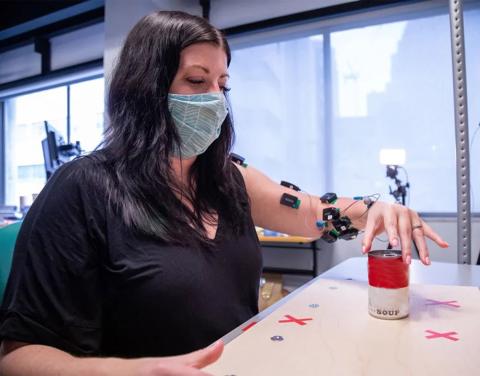Potential New Therapy Seen for Upper-Limb Paralysis

Photo: Tim Betler/UPMC and University of Pittsburgh Schools of the Health Sciences
In a small study, researchers used a device that stimulates the spinal cord to restore arm and hand mobility in two stroke patients, allowing them to perform daily life activities, such as using a fork to eat a meal. The study, published in Nature Medicine, was funded by NIH’s Brain Research through Advancing Innovative Neurotechnologies (BRAIN) Initiative.
The technology uses a set of thin metal electrodes implanted on the surface of the spinal cord. Electrical impulses from the device stimulate neural circuits in the spinal cord, priming them to receive movement signals from the brain. This engages muscles that have been weakened by stroke, allowing patients to voluntarily lift their arm, open and close their fist, and grasp household objects.
In the two stroke patients, who had moderate to severe motor impairments, researchers found that continuous stimulation targeting the cervical sensory nerve roots of the spinal cord immediately improved strength, range of motion and function of the arm and hand. Stimulation also enabled participants to perform complex tasks that require more skill and dexterity, such as using utensils to eat and opening a lock, activities they had not done in years.
Surprisingly, some benefits persisted for several weeks after the device was removed. This suggests that when combined with physical or occupational therapy, this assistive stimulation approach could lead to more robust long-term improvements in motor function.
